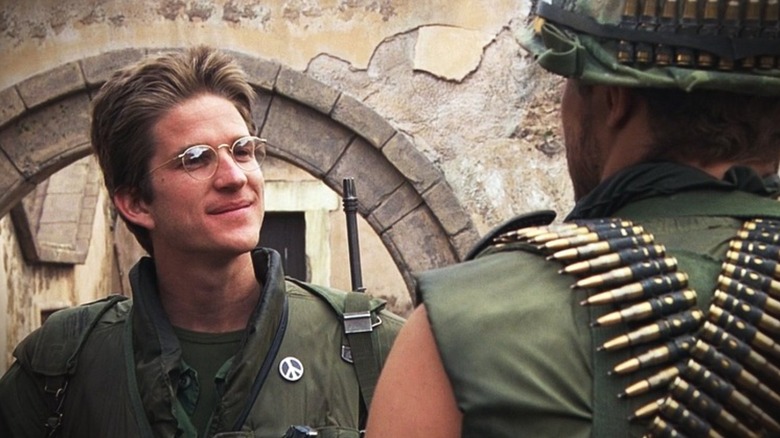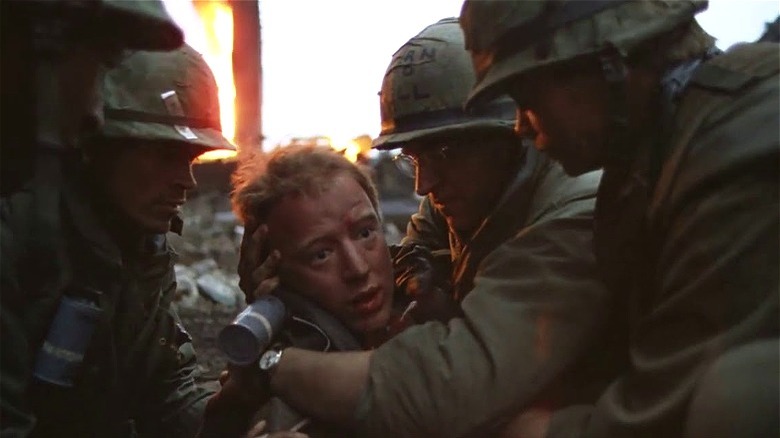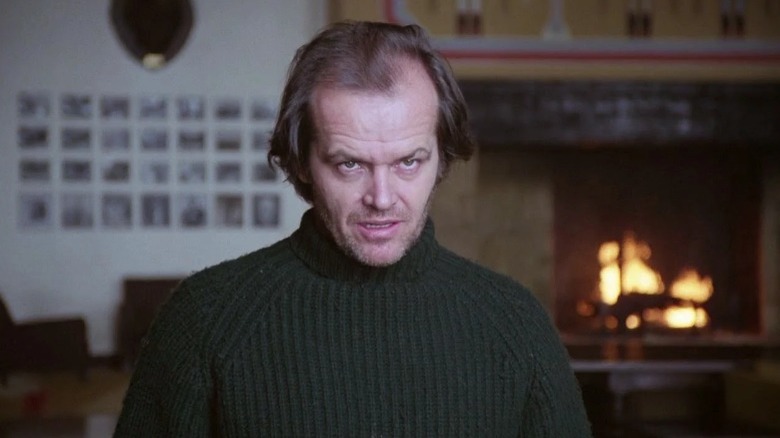Full Metal Jacket's Nod To 2001 Wasn't Something Stanley Kubrick Had Planned
Stanley Kubrick is known for his meticulous devotion to every aspect of his films, which are painstakingly handcrafted from start to finish. The director's body of work still inspires conversations about the craft of filmmaking, and while some of his works have undergone critical reappraisal over the years, others continue to be lauded due to their thematic richness and enduring appeal.
The vastly interpretative nature of Kubrick's work has led to folks attempting to parse hidden layers of meaning in his films — a good example would be Rodney Ascher's "Room 237," which minutely unboxes what "The Shining" means, almost to a fault. Not every visual or thematic reference in a Kubrick film, however, is a deliberate or conscious nod to some grander idea.
In an interview with Rolling Stone, Kubrick was asked whether there was some thematic resonance between certain scenes of "Paths of Glory" and "Full Metal Jacket." While this overlap seems likely at first glance, Kubrick sets the record straight by saying that the resonance is nothing more than an accident — "Full Metal Jacket" was based on Gustav Hasford's short story, "The Short-Timers," and Kubrick was simply playing out a scene from Hasford's work. Its similarities with "Paths of Glory" were pure coincidence.
While explaining this, Kubrick talked about yet another unintentional nod in "Full Metal Jacket," which some viewers believed was a reference to "2001: A Space Odyssey." This, however, was not the case. Let's dive into what Kubrick had to say.
An amazing coincidence
In "Full Metal Jacket," Cowboy (Arliss Howard) is left in charge during the Battle of Huế. The following sequence has Cowboy and his squad trying to find a sniper, and the visceral tension is palpable. Stanley Kubrick frames these shots in a way that complements the tone of the scenes, especially when Cowboy is shot and his squad moves him over to a sheltered space as he breathes his last breath. In the background, there is a burning tower that drives home the tragedy of Cowboy's sudden death, which appears to look like the rectangular monolith in "2001: A Space Odyssey." Kubrick explained, however, that this is a mere coincidence:
"Cowboy is dying, and in the background, there's something that looks very much like the monolith in '2001.' And it just happened to be there ... when Cowboy is shot, they carry him around the corner — to the very most logical shelter. And there, in the background, was this thing, this monolith. I'm sure some people will think that there was some calculated reference to '2001,' but honestly, it was just there."
To further explain how the burning tower ended up in the shot, Kubrick broke down how the scene was filmed. The combat area was a real location that was perfect for "small-unit action," and had elements like a low wall that added to the scene's authenticity. Since everything was left exactly as it was found and Kubrick refused to cut away during an emotionally-charged on-screen death, the tower just happened to be there in the background. While the structure does add a visual layer of pathos to the scene, it's by no means a callback to an alien artifact that triggers the evolution of mankind, like in "2001: A Space Odyssey."
The problem with misguided overanalysis
Art, in any form, invites multiple interpretations and holds space for contradictory analyses. This can give rise to The Rashomon Effect, which not only introduces contradictory perspectives of a narrative event within a story, but also ushers in subjective audience interpretations. While this is a healthy way of enjoying art, overanalysis — or connecting the dots just for the sake of it — can quickly sap the joy out of film analysis. This is especially true in the case of filmmakers like Stanley Kubrick, whose body of work contains rich, layered subtext just waiting to be ripped apart by those obsessed with finding out what every single frame means.
Take Kubrick's "2001" as an example. His moving space drama has been parsed through several lenses, ranging from religio-mythological readings to ones that give rise to questionable conspiracy theories about space. When Kubrick himself was asked about the true meaning of the film, he replied that "2001" is a "visual, nonverbal experience" that is highly subjective from viewer to viewer.
This begs the question: How much is too much? Rodney Ascher's "Room 237" posits some interesting theories about the Overlook's impossible window and recurring symbolism in "The Shining," but also encourages wild speculations such as the film being Kubrick's apology for faking the moon landing. This, in my view, is an example of misguided overanalysis. Although directorial intent can color our perception of a film, and going beyond what's intended can open fresh avenues of discussion, exhaustive overanalysis can quickly turn the process into a chore. Not everything has to be tinted with meaning.


